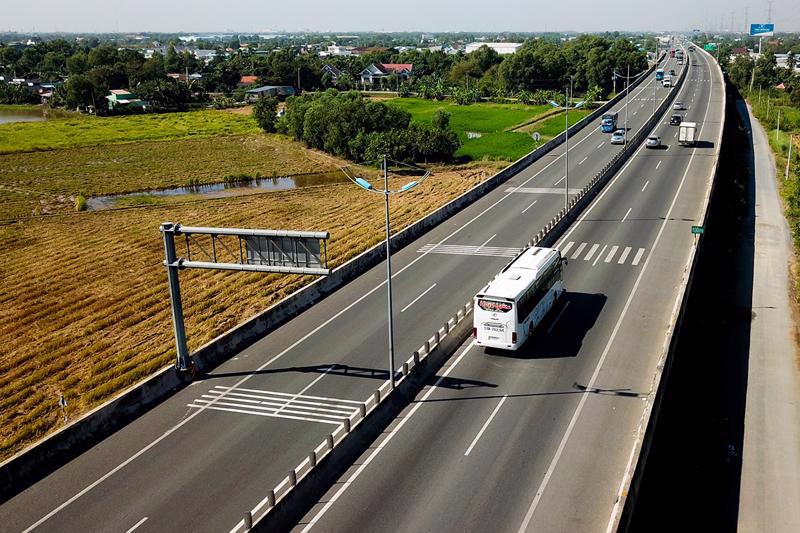Under draft adjustments to the master plan for national road network development in the 2021-2030 period and vision to 2050, for which advice is sought from relevant ministries, agencies, localities, and experts, the Ministry of Transport proposes upgrading and extending many expressways, including the Eastern North-South Expressway, which is currently under construction.
A 90-km extension to the Eastern North-South expressway is to be built under the proposal. It would then stretch 2,153 km in total, running from northern Lang Son province to the country’s southernmost cape in Ca Mau province.
The extended section, linking Ca Mau city to Dat Mui, the province’s southernmost commune, is expected to ease pressure on growing traffic between the two localities, which is forecast to reach 18,300 to 20,100 passenger car units (PCU) by 2030. It also complies with the province’s roadmap for development of the Hon Khoai Seaport, the Nam Can Economic Zone, and the Mui Ca Mau National Tourist Site.
Under proposal, the 40-km-long Ben Luc-Trung Luong section of the expressway, which connects Ho Chi Minh City and the socio-economic center of the Mekong Delta, will be widened from six lanes to eight lanes to cater to traffic volumes of between 78,700 and 85,100 PCU.
Meanwhile, a new 136-km, four-lane expressway between central Quang Ngai province and the central highlands’ province of Kon Tum is to be built, as the existing National Highway No. 24 is forecast to be insufficient to handle traffic flows between the coast and the central highlands by 2030.
Five other highway segments in the northern region, three in the central region, and five in the southern region will also be expanded. The projected 1,205-km-long Western North-South Expressway and ring roads around Hanoi and Ho Chi Minh City remain unchanged.
If this proposal is accepted, the country would have 42 highway segments stretching 9,263 km, against the 41 and 9,014 km under current planning.









 Google translate
Google translate